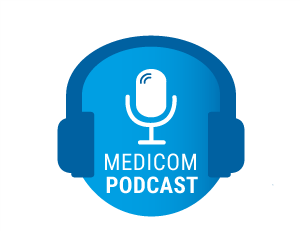"The transition to remote care during the pandemic has been large-scale, rapid, and will likely be here to stay," Dr. Neal Yuan of the San Francisco VA Medical Center and the University of California, San Francisco, told Reuters Health by email.
"We recently conducted an in-depth analysis of clinician prescribing and ordering practices during cardiology clinic visits and found a clear pattern of reduced medication prescription and testing when comparing remote visits to in-person visits (https://bit.ly/3aElUn5)," he noted. "This caused us to wonder whether this reduction in testing and prescribing was having an effect on how patients were doing."
"Confirming what we had seen (previously)," he said, "we found (in the current study) that clinicians ordered fewer diagnostics tests and medications during remote visits compared to in-person visits, with the greatest reduction seen during telephone visits."
Further, he said, "patients who were seen by telephone actually appeared to have higher rates of dying within 90 days of their visit when compared to patients seen in person."
"Bias due to patient selection remains possible," he acknowledged. "We also don't necessarily believe that telephone visits as a whole should be abandoned for heart failure patients, but rather that a more nuanced approach is needed."
As reported in Circulation: Heart Failure, the study included all ambulatory cardiology visits for heart failure at a multisite health system from April through December 2019 (pre-COVID) and April through December, 2020 (COVID era), resulting in: 10,591 pre-COVID in-person visits; 7,775 COVID-era in-person; 1,009 COVID-era video; and 2,322 COVID-era telephone.
Overall, participants' mean age was about 73; about 61% were men; and about 66% were white.
Compared with in-person visits, video visits were used more often by younger (mean age, 64.7 vs. 74.2), male (68.3% vs. 61.4%), and privately insured (45.9% vs. 28.9%) patients.
Remote visits were more frequent for non-White patients (35.8% video and 37% telephone vs. 33.2% in-person).
During remote visits, clinicians were less likely to order diagnostic testing (odds ratio, 0.20 for video vs. in-person; 0.18 for telephone vs. in-person). They were also less likely to prescribe beta blockers (0.82; 0.35), mineralocorticoid receptor antagonists (0.69, 0.48), or loop diuretics (0.67, 0.45).
Specifically during telephone visits, clinicians were less likely to prescribe ACE (angiotensin-converting enzyme) inhibitor/ARB (angiotensin receptor blockers)/ARNIs (angiotensin receptor-neprilysin inhibitors; 0.54).
As Dr. Yuan noted, telephone but not video visits were associated with higher rates of 90-day mortality (1.82) and nonsignificant trends towards higher rates of 90-day heart failure emergency department visits (1.34) and hospitalizations (1.36).
The authors state, "Clinicians should be aware that there may be barriers unique to remote visits, such as decreased communication clarity and inability to perform comprehensive physical examinations, that can influence care practice patterns, including the ordering of appropriate tests and medications. This, in turn, may affect patient outcomes."
Dr. Paul Hauptman Professor and Dean, Division of Cardiology at the University of Tennessee Graduate School of Medicine in Knoxville, commented on the study in an email to Reuters Health. "Using data from an urban multisite health system, the authors engage in a complicated statistical exercise to determine if there are differences in process measures and outcomes in patients managed before and during COVID surges and in defined subgroups in the latter."
"Not surprisingly, more tests were ordered when patients were seen in the office," he said. "It appears that there were fewer - presumably new - prescriptions for several established medications indicated for the treatment of HF with reduced ejection fraction in patients who had virtual visits."
"Further," he said, "the event rate for HF-related emergency department visits and/or hospitalizations trended higher for patients who had a prior telephone visit versus video or in-person encounter."
"While the authors appropriately perform a series of sensitivity analyses, residual confounding likely exists, such as the provider type (e.g., physician, nurse practitioner, other provider) and frequency of antecedent encounters," he said. "However, these data provide a cautionary note that not all remote visits are the same and most importantly, long-term, the office/clinic may still be the best setting in which to manage patients with complex chronic conditions like heart failure."
SOURCE: https://bit.ly/2XgBFO5 Circulation: Heart Failure, online September 30, 2021.
By Marilynn Larkin
Posted on
Previous Article
« Age-related changes occur in small-intestine microbiome Next Article
Adherence to sacubitril/valsartan for heart failure tied to risk of readmission, death »
« Age-related changes occur in small-intestine microbiome Next Article
Adherence to sacubitril/valsartan for heart failure tied to risk of readmission, death »
Related Articles

September 14, 2021
ESC 2021 Highlights Podcast

June 7, 2023
HFA 2023 Highlights Podcast
© 2024 Medicom Medical Publishers. All rights reserved. Terms and Conditions | Privacy Policy

